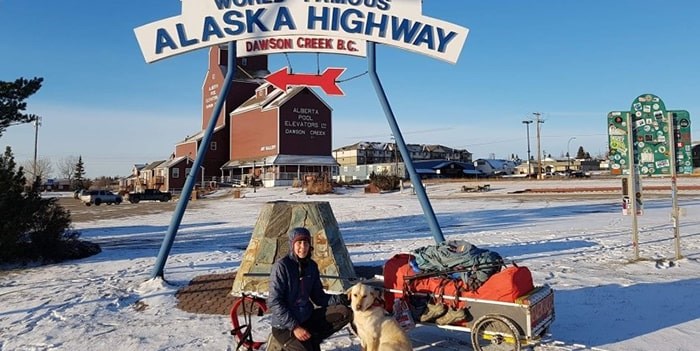
Cyril Derreumaux and his custom-made kayak named Valentine
Updated 2021.06.11 »
After more than four days of holding in place and waiting for things to get better, Derreumeux made the difficult decision to call the U.S. Coast Guard for a rescue.
A helicopter was dispatched in the night to retrieve the ocean kayaker, who was airlifted off the water and flown back to shore. Once on land however, it didn’t take him long to start thinking about resuming the journey.
Updated 2021.06.07 »
After just a week, Cyril Derreumaux has abandoned his attempt to kayak alone to Hawaii. He set off on May 31, and although the first few days went smoothly, conditions deteriorated over the last 72 hours. He eventually called for rescue.
Derreumaux had not moved since June 4. Because of the rough weather, he deployed his sea anchor and stayed inside the cabin.
Yesterday, winds reached 55-65kph with gusts over 80kph. The waves towered to 4.5m. He also had an issue with his sea anchor but couldn’t try to fix it in such weather.
Earlier…
Rebecca McPhee for Explorersweb »
On May 31, Cyril Derreumaux dipped his paddle in the Pacific and began his 4,450km solo kayak from San Francisco to Hawaii. The 44-year-old hopes to complete the journey in 70 days.
His custom-made kayak Valentine — named after his sister –- includes an enlarged watertight aft cockpit for sleeping and storage of some of his 140 kilograms of equipment and supplies. This makes his experience quite different from the iconic paddle that Ed Gillet did in 1987, using an off-the-shelf sea kayak. Gillet, the only person to kayak from the U.S. to Hawaii, was the inspiration for Derreumaux’s project.

